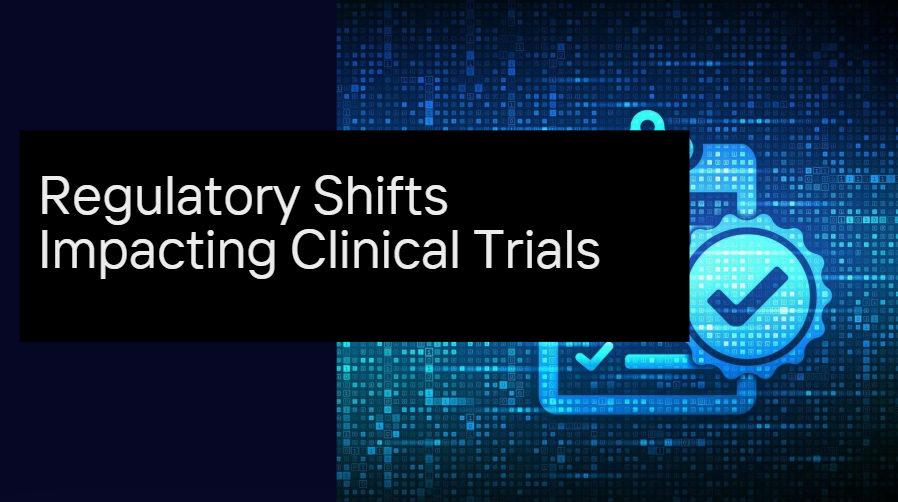The clinical trials landscape in Europe is undergoing significant transformation in 2025. A convergence of regulatory updates, digital harmonization, and policy realignments is shaping how biotech and health tech companies approach innovation, patient engagement, and market entry. These changes are not only improving trial transparency and efficiency but also redefining how emerging therapies make their way from lab bench to bedside.
In this post, we explore the most critical regulatory shifts impacting clinical trials across the European Union and how forward-thinking organizations are adapting to the new normal.
The EU Clinical TrialsRegulation: One Year In
A cornerstone of the new regulatory environment is the EU Clinical Trials Regulation (CTR) 536/2014, which officially came into full effect in January 2023. Now, in 2025, its full implementation is showing both its strengths and growing pains.
Key Features of the CTR:
Centralized Application Portal (CTIS): A single online entry point for submissions, designed to streamline and harmonize trial applications across EU member states.
Greater Transparency: Mandatory public disclosure of trial protocols, decisions, and results.
Defined Timelines: Faster assessment procedures with fixed timelines for decision-making.
2025 Update:
As of this year, all new clinical trial applications must be submitted via CTIS, and legacy trials are required to transition into the system by January 31, 2025. This shift is prompting both large and small sponsors to re-evaluate their operational models and invest in new regulatory technology (RegTech) tools.
Impact on Trial Start-Up Timelines
While the CTR promises efficiency, the transition has introduced short-term friction. Companies report mixed experiences with the Clinical Trials Information System (CTIS). Some of the common issues include:
Learning curve with CTIS functionality and user permissions
Varying member state interpretations despite centralized guidance
Delays in ethics committee synchronizations in multi-country trials
Yet, many leading sponsors are reporting faster approvals for low-risk or well-prepared submissions, especially those involving digitally supported trials or well-developed Investigational Medicinal Product Dossiers (IMPDs).
Takeaway: Companies that integrate compliance early and embrace centralized digital workflows are already gaining a competitive edge in trial initiation speed.
The Rise of Decentralized Trials and EU Adaptation
Decentralized Clinical Trials (DCTs) are gaining momentum globally—and Europe is adapting to this shift through updated guidance from the European Medicines Agency (EMA) and national authorities.
What’s Changing:
Acceptance of Remote Consent: More countries are now aligned with eConsent frameworks, especially in low-risk, observational, or digital device studies.
Telemedicine Integration: Remote monitoring, home nursing visits, and digital endpoints are being considered viable for primary data collection.
Wearables and ePROs: Increasing alignment on the use of patient-reported outcomes collected via apps and wearables.
Regulatory Caution:
While supportive in principle, European regulators emphasize data protection and risk mitigation in DCTs. The General Data Protection Regulation (GDPR) remains a complex overlay on patient data handling, and cross-border compliance must be carefully managed.
Strategic Advice: Sponsors should work with contract research organizations (CROs) and local ethics boards that are familiar with decentralized methods and digital validation standards.
AI in Clinical Trials: New Oversight on the Horizon
Artificial intelligence (AI) is beginning to play a growing role in protocol design, patient recruitment, and site selection. But in 2025, regulators are making it clear that AI-powered tools must meet strict oversight criteria especially when used in trial-critical decision-making.
The new EU AI Act, which classifies AI systems based on risk levels, is expected to have significant implications for software used in clinical operations. Tools that assist with eligibility screening or dosage prediction may fall under high-risk categories, requiring:
Algorithm transparency
Human oversight documentation
Robust data governance
What to Watch: Regulatory agencies may soon require formal validation for AI tools used in trials, similar to how medical devices are assessed for performance and safety.
Cross-Border Collaboration and Trial Harmonization
One of the original promises of the CTR was to enable multi-country trials with unified processes. In 2025, this vision is coming closer to reality, but unevenly.
Key Progress:
Joint Assessments: Member states increasingly rely on work-sharing models, with one state taking the lead on technical assessments.
Pediatric Trials: EU authorities are piloting centralized reviews of pediatric investigation plans (PIPs) to avoid duplication.
Rare Disease Collaboration: Cross-border cooperation is improving for ultra-rare conditions where trial populations are limited and geographically dispersed.
Remaining Hurdles:
Persistent differences in language requirements and local procedures
Delays in national ethical committee reviews
Lack of real-time integration between EMA and national databases
Emerging Best Practices: Companies initiating multi-country trials are now building regulatory intelligence teams to navigate country-specific nuances while leveraging centralized efficiencies.
Data Transparency and Publication Requirements
Transparency is a defining theme in Europe’s trial regulation. In 2025, sponsors must meet mandatory disclosure timelines for:
Trial registration
Protocol publication
Result posting (within 12 months of study end)
Non-compliance is increasingly tied to funding limitations and reputational risks, especially for companies seeking EU-based public sector grants or health technology assessment (HTA) recognition.
To meet these expectations, many sponsors are adopting:
Automated disclosure workflows
Plain language summaries for public readability
Dedicated data sharing platforms
Industry Insight: Patient advocacy groups and institutional investors are now using transparency compliance as a proxy for credibility and governance maturity.
What It Means for Investors and Innovators
For investors, the evolving European clinical landscape signals opportunity with conditions. The regulatory bar is rising, but so is the clarity around what it takes to bring innovations to market responsibly.
Companies that:
Invest early in regulatory planning
Align with decentralized and digital methodologies
Embrace transparency and data stewardship
…are likely to not only navigate these shifts more smoothly but also gain faster access to commercial markets through validated real-world evidence and regulator trust.
2025 marks a pivotal year for clinical trials in Europe. The implementation of the Clinical Trials Regulation, growing adoption of digital tools, and stronger transparency standards are all redefining how health innovations progress through the pipeline.
For biotech and health tech companies, success increasingly depends on regulatory fluency, operational readiness, and strategic foresight. And for investors, it’s a valuable window to identify companies that are both scientifically ambitious and structurally prepared for long-term success in a more demanding but promising regulatory environment.



